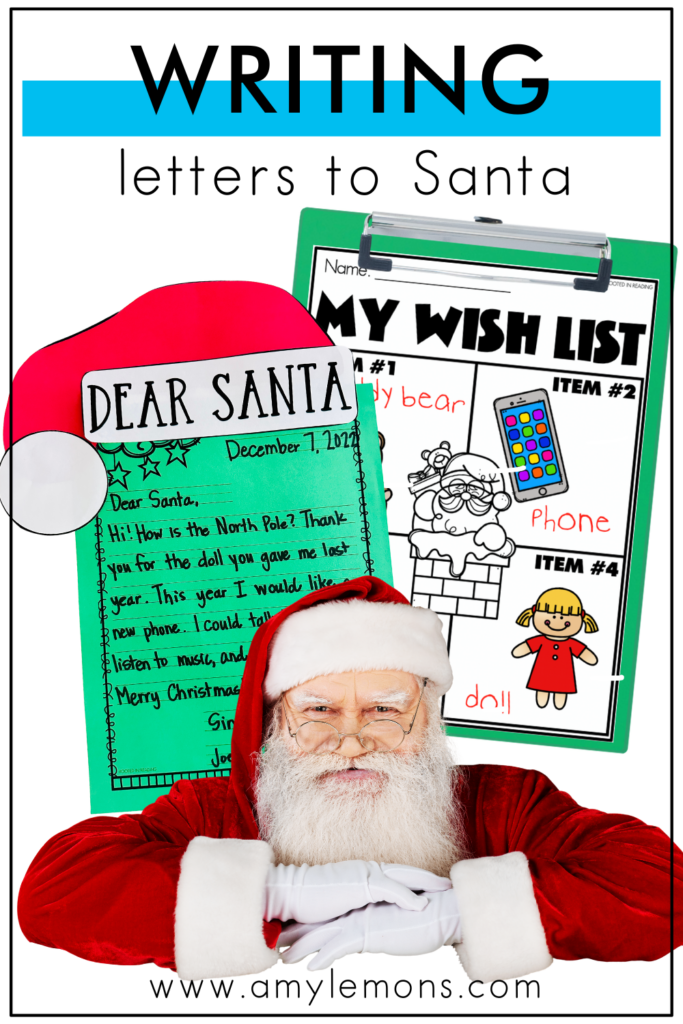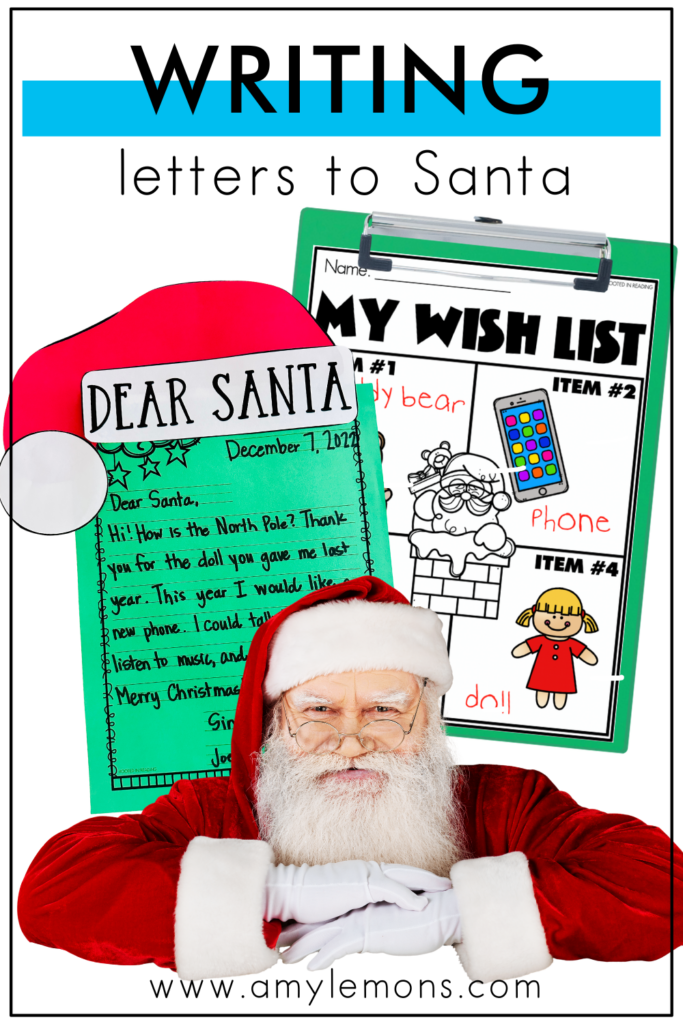

Turn those Christmas lists into a full-fledged letter writing lesson! Learning how to write a letter is an essential skill with social impact. While students may or may not always know what to talk about when writing a letter to a friend or family member, you can bet they’ll have no issue thinking of things to say to Santa!
Take advantage of their eagerness and use it as an opportunity to teach students the steps to letter writing. In this case, students will be focused on a friendly letter but there are so many other components that can be spiraled in as well.
Over the span of 5 days, students will learn the basic components of a letter, proper formatting, how to organize thoughts and ideas, and the characteristics of friendly writing.
And in the end, they’ll have a Santa letter and Christmas wish list ready to go!
{Quick Note: While this post is about writing letters to Santa, the strategies and activities can be applied to writing any friendly letter!}
When students engage in letter writing they are learning effective communication and reinforcing grammatical and structural components of language.
It also empowers students to articulate thoughts, feelings, and ideas in a coherent and organized manner, honing both written and verbal expression.
Now, let’s dive into letter writing using our Letters to Santa writing unit as inspiration!
Before writing a letter, students must understand the letter-writing process and its components. To get started, introduce the parts of a friendly letter. Use the terms heading, greeting, body, closing, and signature as you are discussing a friendly letter.
After the students have been introduced to the parts of a letter, they can practice writing a simple friendly letter to a classmate or family member. It doesn’t have to be perfect, students just need to practice before diving into their Santa letters.
After students have a letter to work with, they will use it to label the parts. Playing around with these terms at the beginning will help them as they create their Santa letters throughout the rest of the writing lesson.
Learning to write letters with a letter to Santa wouldn’t be complete without the wish list. I mean, that’s kind of the point!
The first step to any type of writing is brainstorming. That certainly applies to writing a friendly letter to Santa. Now that students have learned the elements of a letter, they can begin the process starting with a brain dump!
Have your students think of 4 items they would like for Christmas (or just as a gift) then, write about and draw those items on a wishlist printable or in their notebooks. You can choose to end your 2nd day of the writing process with this step, so as to not overwhelm them. Keep their wish lists on hand for Part 3 of the process.
Pro Tip: Try to have students offer a variety of items rather than things like a TV, video game system, iPhone, or drone. You can even offer them catalogs to browse through!
For the third part of the Santa Letter writing process, students should practice expanding topics or ideas with reasons. Friendly letters may not always require reasons, but this is a great way for students to practice writing in detail.
For this exercise, have students choose one item from their wishlist that they want the most.
Then, students will take that item and expand on it by writing down the item they want most of all on their All I Want writing page and giving three reasons that explain WHY they want it. This exercise will assist students in planning out and writing the body of their letter later on.
If your students can’t celebrate Christmas, they can write about things they want for a birthday or just because.
Taking all of the components created earlier in the week, students can begin writing the initial draft of their letter to Santa, or whichever subject they choose. At this stage, you want to introduce students to different greetings and closings for their writing.
Display greetings and closing posters for students to reference during the writing process. Allow students to choose which feels most natural to them, but provide examples and scenarios of how they may be used best.
Next, students can create their first draft.
At this stage, you should revisit the components of a letter: headings, body, signature, etc., and have students go over their writing to make sure all items are present. In addition, review other revisions like checking for spelling, punctuation, and capitalization.
The publishing phase of the writing process includes students rewriting their final draft with the edits made from the previous day, checking that all letter components are present, and prepping the letter to be mailed off!
Add a festive touch by using a fun, Christmas-themed writing page with the addition of a Santa craft for a hands-on element.
Next, students will practice adding contact details to their “envelopes.” For the Santa letters pictured throughout this post, the letters double as envelopes!
Students will fold the letters into a trifold, add their contact information (which is a bonus lesson!), and address it to Santa Claus (or a friend!)
All of the activities mentioned in this post can be found in our Letters to Santa Christmas Craft and Writing unit, including lesson plans for 5 days of learning and writing rubrics!
You can find additional lesson plans and activities for letter writing inside our Write On! Unit for Opinion Writing Including Persuasive and Letter Writing.


Hey, y’all! My name is Amy Lemons and I am passionate about providing students with both engaging and effective standards-based Math and ELA lessons.

Sample a day of Rooted in Reading with these lesson plans and activities for Reading Comprehension, Vocabulary, and Grammar!